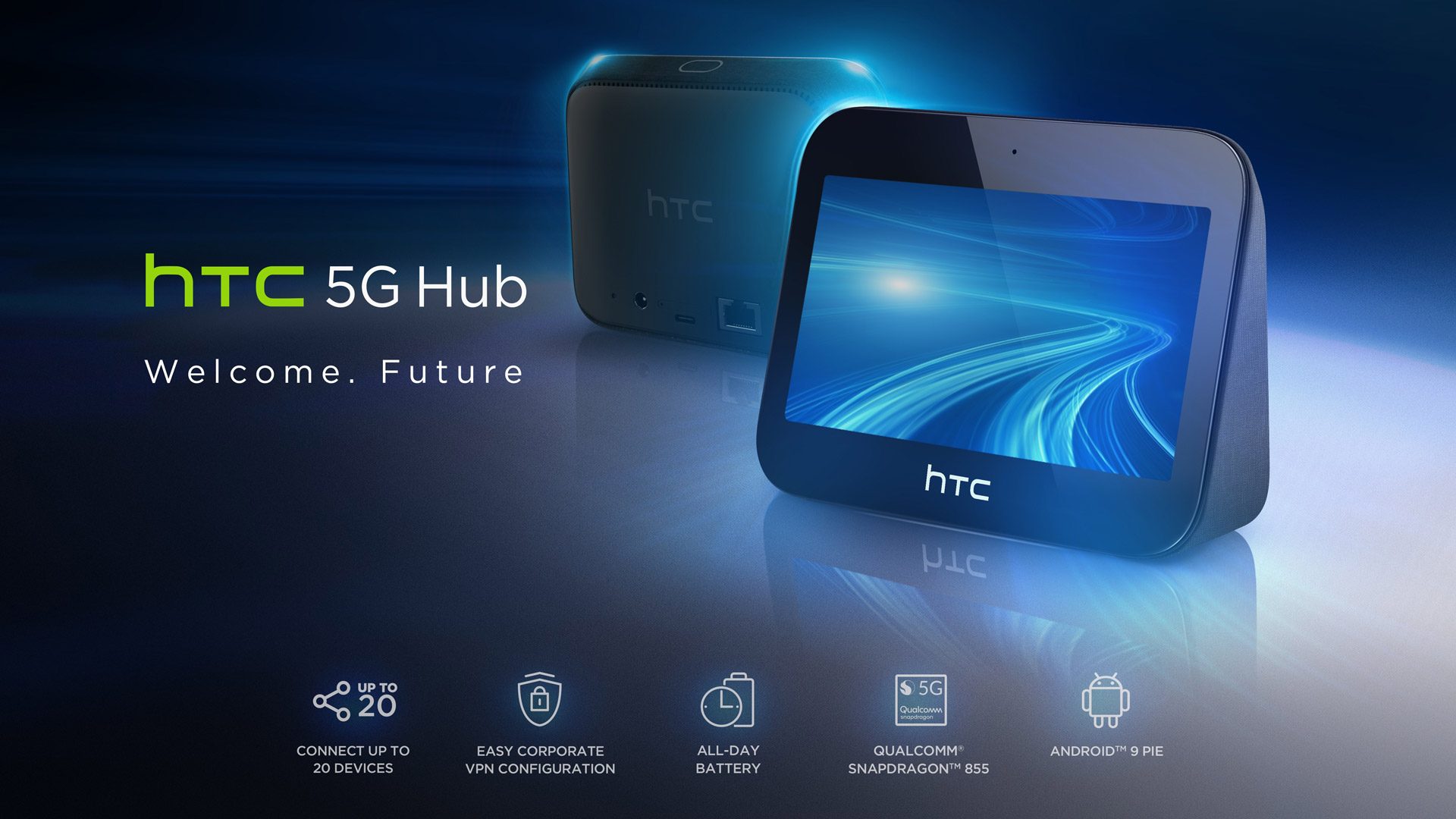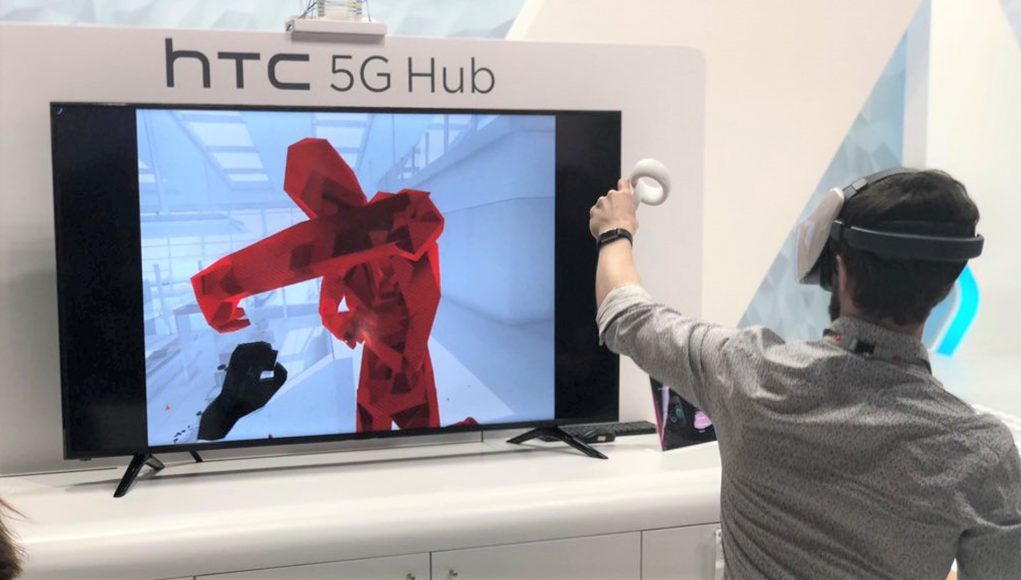HTC announced a new product out of left field here at Mobile World Congress (MWC) this week, the 5G Hub mobile hotspot that includes a media streaming device, a digital assistant, and Internet access point for up to 20 concurrent devices. HTC’s growing focus on virtual reality has also led it to include what the company says will be one of the first devices to deliver on the promise of cloud-based app rendering for VR headsets.
Update (3:35 PM ET): In a previous version of this article it was stated that the demo used a 60Ghz 5G transponder, when in reality it was actually a full sub-6Ghz 5G network. More precise information was also added regarding expected latency.
Edge computing is an important part of the cloud-based gaming of the near future: ideally apps should be rendered as close to the person as physically possible to minimize latency across the board, including user input over the realistically assumed 100 Mbps 5G data transfer speed and near instant delivery of the compressed image to the headset. I couldn’t get much closer to ‘the edge’ today than HTC’s booth setup, which had a fully functional miniaturized mock-up of cloud-based rendering farm, sub-6Ghz 5G network, and a 5G Hub to wirelessly serve up VR content.
The promise is that—at some point during the 5G Hub’s product cycle—users will be able to stream SteamVR apps to VR devices that simply don’t have the compute power at their disposal. Prominently featured in the product reveal video was Vive Cosmos, HTC’s upcoming VR headset which connects to standard VR-ready computers via a traditional tether. When it was revealed at CES in January, Cosmos was teased to also be compatible with smartphones, and I think that particular piece of the puzzle is mostly answered by the inclusion of 5G Hub.
The headset’s local compute power doesn’t need to be much more involved than handing standard controller/room tracking and decoding the compressed image though, which hypothetically opens the door to low-power mobile headsets like Vive Focus Plus to play games designed for dedicated at-home, VR-ready gaming computers.
For the purposes of the demo space, which was absolutely teeming with crosstalk from a sea of 5Ghz WiFi signals, the company opted to tack on an external WiFi antenna with greater band ranged to the outside of the Vive Focus Plus for signal clarity, a little white box the size of a 5-pack of gum. I was assured the headset’s on-board 5Ghz WiFi antenna was up to task under normal conditions though, performing similar to the headset’s ability to locally stream SteamVR apps from an at-home gaming computer to the headset using HTC’s optimized version of the Riftcat VRidge software. In this case however HTC actually worked with AMD to use a cloud-optimized streaming solution in the 5G demo.
To that tune, I was treated to a demo of the cloud-based rendering setup using Vive Focus Plus running the immensely successful shooter Superhot VR (2017), a PC VR game that doesn’t natively support mobile headsets.

Under the pressure of the throng of onlookers, I can’t say I was exactly good at replicating my awesome red-guy beatdown skills that I had learned playing the game off and on since it was first released, although having the analogue of a game that I’ve played before made for an excellent point of comparison. That said, I wasn’t so much concerned with performing well, as I was pushing the limits of the biggest factor involved in the cloud-based VR rendering: latency.
Moving my head around the scene at a medium speed, black bars crept into the periphery of my field of view, the telltale sign that my head was moving faster than the hardware could serve up frames. It wasn’t like I was used to with less powerful setups though, as it’s clear the rendering hardware wasn’t skipping a beat. While the black bars crept in, the visible portion of the image was still fairly smooth, likely thanks to some aggressive time warping technique to generate synthetic frames to keep things moving along.
The setup was more of a conceptual demo, and isn’t close enough to a final product to talk latency specs, HTC China president Alvin Wang Graylin told me. Graylin fully expects to get an effective 20ms latency with predictive techniques, which in practice would be very close to the range the VR industry has mostly agreed upon to be an acceptably low enough latency to be unnoticeable. Graylin also told me that latencies might be longer depending on network conditions however.
Despite being an imperfect implementation, HTC is one of the first to show something of this caliber actually working. And while VR users will definitely need to hold off on buying a 5G Hub in hopes of playing VR games through the cloud soon—two entirely separate industries need to materialize before that can happen—it’s incredibly interesting to see the early steps in action.







